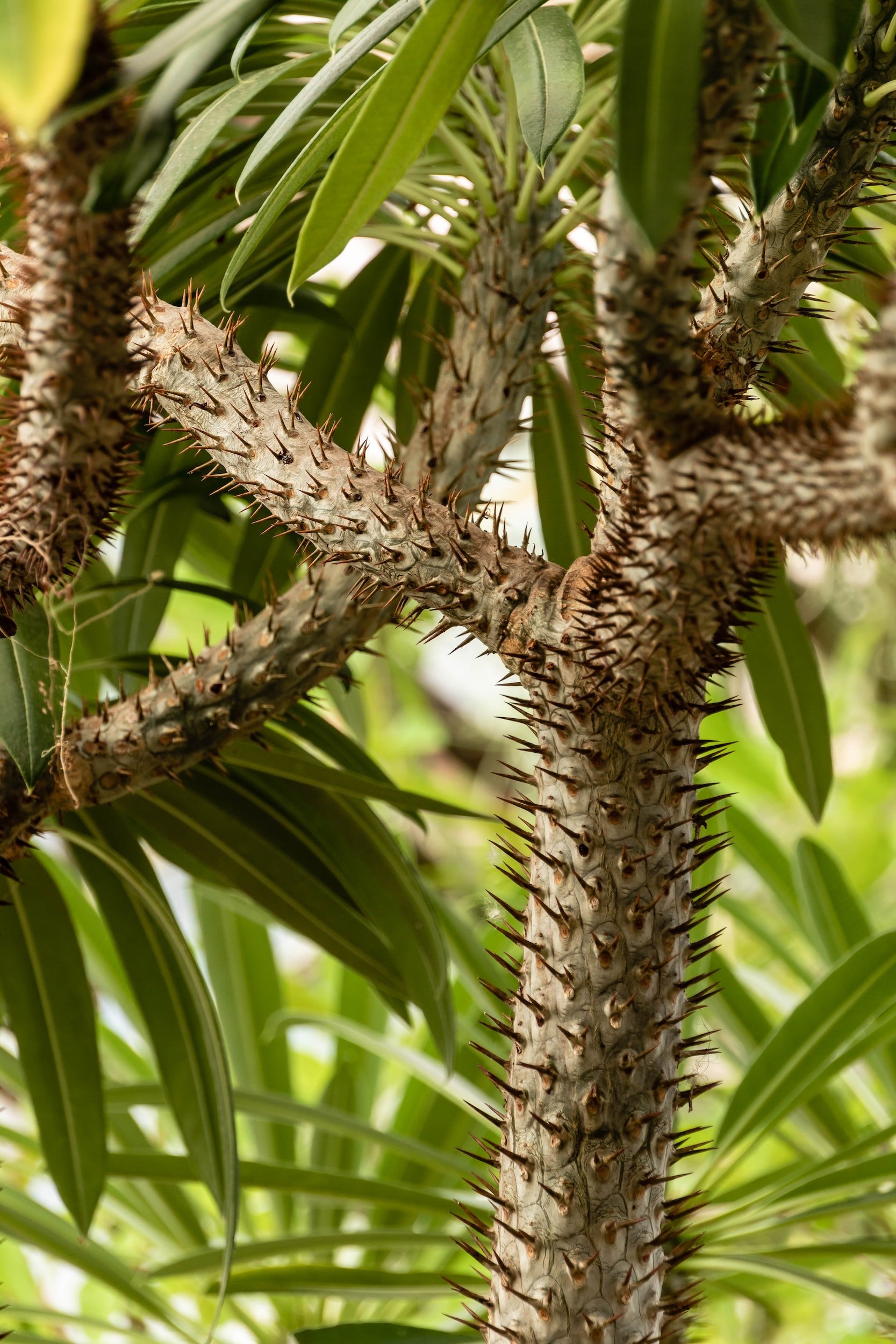Pachypodiums: A Fascinating Genus of Succulent Plants
Pachypodiums are a genus of succulent plants native to Madagascar and parts of Africa. They are commonly known as "Madagascar Palm" due to their tall, palm-like growth habit and the fact that they are often found in the same habitats as palms. However, pachypodiums are not true palms, but rather a member of the Apocynaceae family.
The genus Pachypodium is made up of around 20 species, with the most well-known species being Pachypodium lamerei, which can grow up to 6 meters tall in the wild. Other species in the genus vary greatly in size and form, with some species growing only a few centimeters tall and others forming sprawling, bushy shrubs.
One of the most distinctive features of pachypodiums is their large, thorny stems, which can reach up to 30 centimeters in diameter in some species. The thorns are actually modified leaves, and serve as a defense mechanism against herbivores. The leaves of pachypodiums are typically small and sparse, and the plants rely heavily on their thick stems for photosynthesis.
Pachypodiums are also known for their striking flowers, which are produced in clusters at the top of the plant. The flowers are typically white, pink, or yellow, and have a tubular shape that is well-suited to pollination by moths and butterflies.
In addition to their ornamental value, pachypodiums have a number of practical uses. Some species are used in traditional medicine to treat a variety of ailments, including digestive disorders and snakebites. The wood of some species is also used for carving and woodworking.
If you are interested in growing pachypodiums, there are a few things to keep in mind. These plants require a well-draining soil mix, as they are prone to root rot if kept too wet. They also prefer bright, indirect light, and should be watered sparingly during the winter months when they are dormant. You can find seeds here

